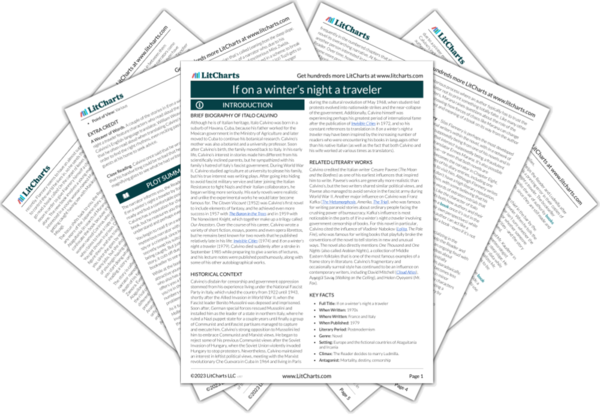Flannery’s idea for a novel is nearly identical to Calvino’s own. This recalls Flannery’s earlier musings about how a tormented author and a productive author might somehow arrive at the same manuscript. It also recalls a famous short story by Jorge Borges (“Pierre Menard, Author of the
Quixote”) that similarly explored the idea of how two very different authors could arrive at the same book. In fact, in this passage Flannery seems to have a godlike power to manipulate his own world and send the Reader away, further blurring the line between character and author.
